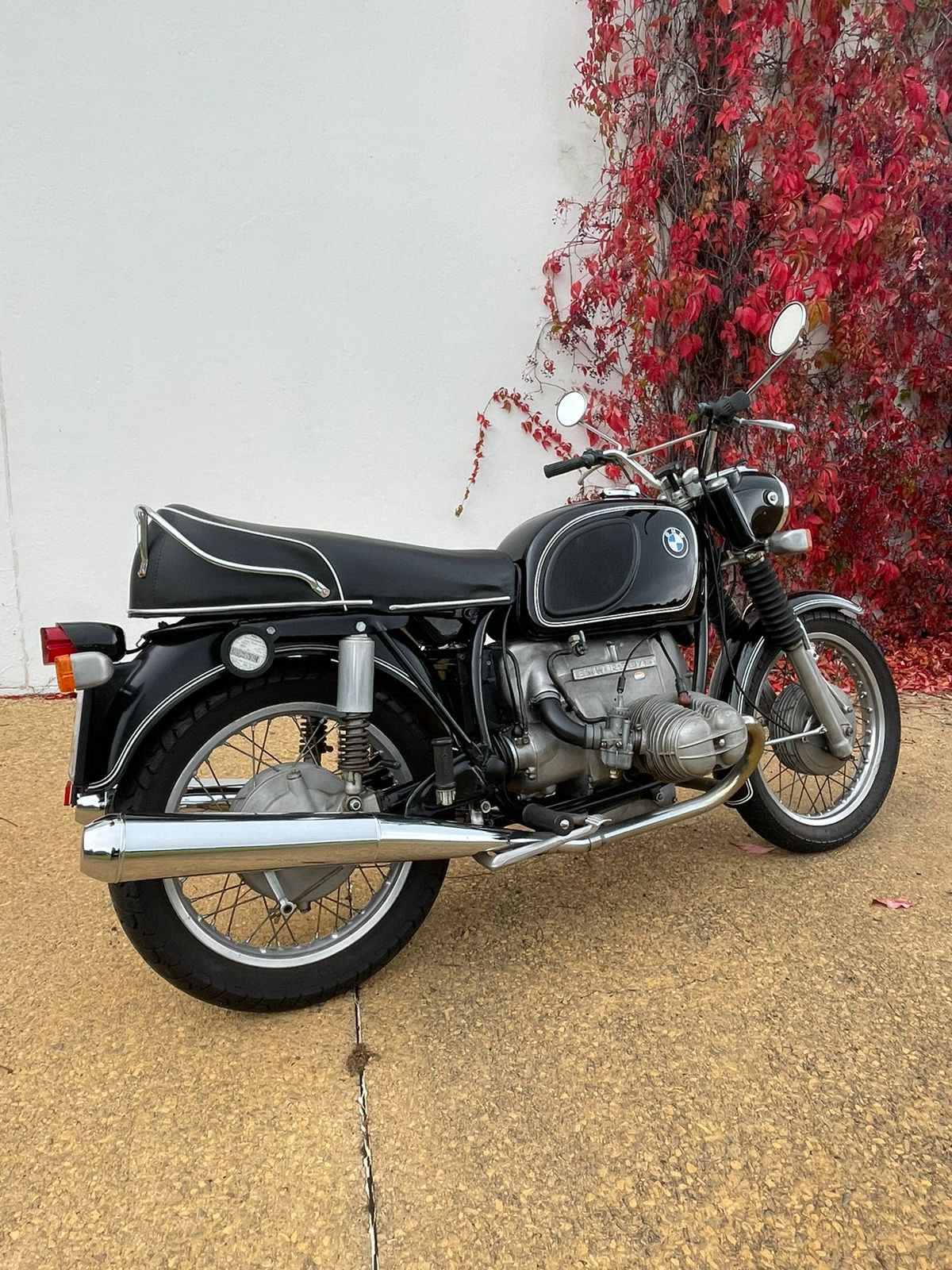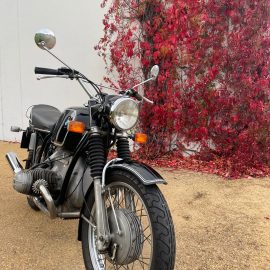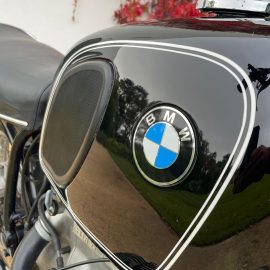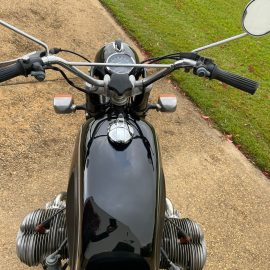
01 May On Yer Bike: BMW R50/5
FMM Curator Wayne Harley describes a rare little boxer…
As BMW sets up to celebrate 100 years of Motorrad – the motorcycle brand of BMW – I will look back at some interesting motorcycles that the company has produced during that time, and thanks to the recent wonderful donation from Mr Daniel Prinz of a R50/5 and a R100RS, what better place to start than with our own collection…
So let me begin with the rather rare 1970 BMW R50/5 of which less than 8 000 examples were produced worldwide from 1969 to 1973. What is rather difficult to believe about this era of BMW’s history is that Motorrad was contemplating ending production of motorcycles as a result of poor sales. However, it was decided to continue production while realising they would need to redesign their motorcycles in order to keep up with the competition. This task was handed to Hans-Gunther von der Marwitz, an ex-Porsche engineer, whose brief was to produce a motorcycle that was more in line with the world market. Pricing would also need to be more attractive to up the sales figures again.
BMW started by moving the production of its motorcycles to a new facility in Spandau, near Berlin. Motorrad stopped producing the solid and sedate R50/2, R60/2 and R69s models with their heavy frames, kick starters and outdated 6-volt dynamo electrical systems, even though they were extremely well built.
Marwitz’s redesign retained the flat-twin boxer engine, but that was all. Everything else would be new and fresh; even the internals of the engine got an extensive upgrade. Gone was the built-up crank and gear-driven cam, making way for a forged one-piece crankshaft with a chain-driven camshaft now below the crank that allowed the cylinder barrels to sit higher in the frame, which improved handling and ground clearance. Iron-sleeved aluminium cylinder barrels replaced the previous cast-iron items, and a new, improved cylinder head was fed by dual Bing slide carburettors. The new engines were affectionately named ‘The Little Boxer’ and made 6 hp (4,5 kW) more than its predecessor. It was also lighter and better balanced, but with 24 kW on tap, it was still rather underpowered by comparison with other bikes of the day. The engine unit was topped off with an all-new 12-volt electrical system with push-button electric starter, although a kick-starter was still fitted as standard. Transmission was a traditional 4-speed gearbox with a drive shaft to the rear wheel.
One of the most significant upgrades was that everything was now mounted into a new, tubular steel frame resting on a fresh suspension design. At the front end, Marwitz used a telescopic fork system – something BMW had innovated almost 40 years earlier – while at the rear he used a shock and spring unit that was manually pre-load adjustable. Wheels were 19-inch at the front and 18-inch at the rear, while stopping power was by means of 200 mm twin-leading shoe drum brake at the front, and single-leading shoe drum brake at the rear.
The little Boxer R50/5 is definitely not a dynamic white-knuckle racing machine, but it has a reputation for being extremely well built and ultra-reliable that has stood the test of time. Considering the limited production numbers, it is remarkable to see how many still exist and still run today. Sadly, it was due to its lack of performance that the R50/5 was phased out so soon to make way for the introduction of the R60/6, R75/6 and the R90/6.
The BMW R50/5 is currently on display in Hall C.








